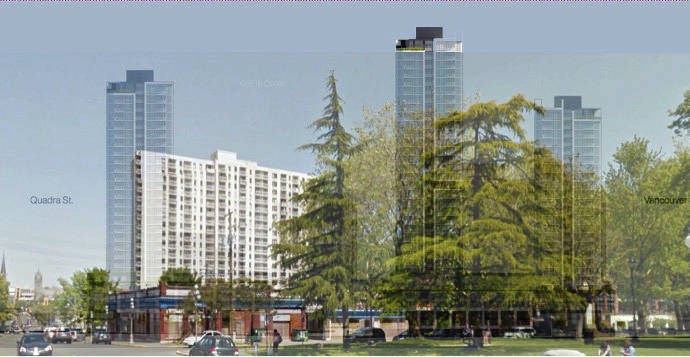Constant construction in Victoria, and almost everywhere from Sidney to Sooke, is an indication of a looming problem for urban planning in the capital region. Plans expected to be good for 30 years are reaching their end dates about 15 years early because population growth has been twice as fast as projected.
To understand the consequences, you need to know that official community plans in the region must conform with the provincially mandated regional growth strategy of the Capital Regional District.
The key policy of the regional growth strategy is to protect natural areas and agricultural lands by keeping new development within an “urban containment boundary,” in effect confining growth to existing urban areas.
To estimate how much growth has to be contained, the regional growth strategy uses data from 2011 as a basis for projecting the population of each municipality at the end of the planning period in 2038.
It turns out that 2011 was at the end of several decades of slow growth. The remarkable speed of growth since then is revealed by annual estimates of municipal populations provided by B.C. Stats, the provincial agency that monitors demographic change.
In 2016, before the regional growth strategy was approved, Sidney, Oak Bay and Esquimalt had reached their projected 2038 numbers. At recent rates of growth, Langford, Victoria and Saanich will reach their projected populations no later than 2024. The capital region as a whole will follow two years later.
Rapid growth is expected to continue. B.C. Stats projects that in 2038 the population of the capital region will be about 475,000, or 50,000 more than expected. At current levels of ownership and household sizes, this means there will be about 35,000 more vehicles on the roads and a need for 23,000 dwellings that plans have not anticipated.
The broad aims of the regional growth strategy — protecting green space, tackling affordability, promoting active transportation — apply regardless of the rate of growth, but it is clear that revisions are needed to the parts of plans that deal with how much growth is expected, and where and how it can be accommodated.
This is especially pressing in Victoria, which is fully built out to its borders and already has a population of about 95,000. If the city maintains its 25 per cent share of the region’s population, when its official community plan ends in 2041 it could be home to about 120,000 people, which is 20,000 more than the plan provides for.
There’s urgency in attending to this because the city will surpass its projected 2041 population in 2023. This means that any decisions about proposed developments will be made in the context of an official community plan that no longer applies in terms of where and how to allocate growth and density.
The proposal for Harris Green Village is coincidentally caught up in this. It will be the largest and tallest development in the city, covering one and a half blocks along Yates Street, with five towers housing about 2,250 people in 1,500 apartments.
It requires major amendments to the official community plan because three of its apartment towers are about 30 storeys, dwarfing nearby apartments, and 10 storeys taller than maximum heights indicated the plan for this part of the downtown core area.
Victoria is a small city, but has one of the highest population densities in Canada and a relatively fine-grained, mid-rise downtown that current plans protect by encouraging context-sensitive development.
Harris Green Village, if approved in the absence of up-to-date planning policies, will set a precedent for handling growth the official community plan does not anticipate. It will begin the ad hoc transformation of Victoria into Yaletown West.
There is no end in sight for growth in the capital region, but does it have to be treated as an irresistible force to be accommodated even if resulting developments permanently change somewhere’s unique character and sense of place?
Or should sense of place be respected and the pressures of growth resisted by requiring large developments to provide affordable housing and other public benefits while conforming to strict guidelines about density, height and context-sensitive design?
Growth can’t be stopped, but perhaps it can be slowed. For Victoria and other communities inside the urban containment boundary, there is no benefit in rushing towards an increasingly crowded future.
Edward Relph lives in Victoria and is an emeritus professor of geography and planning at the University of Toronto.



